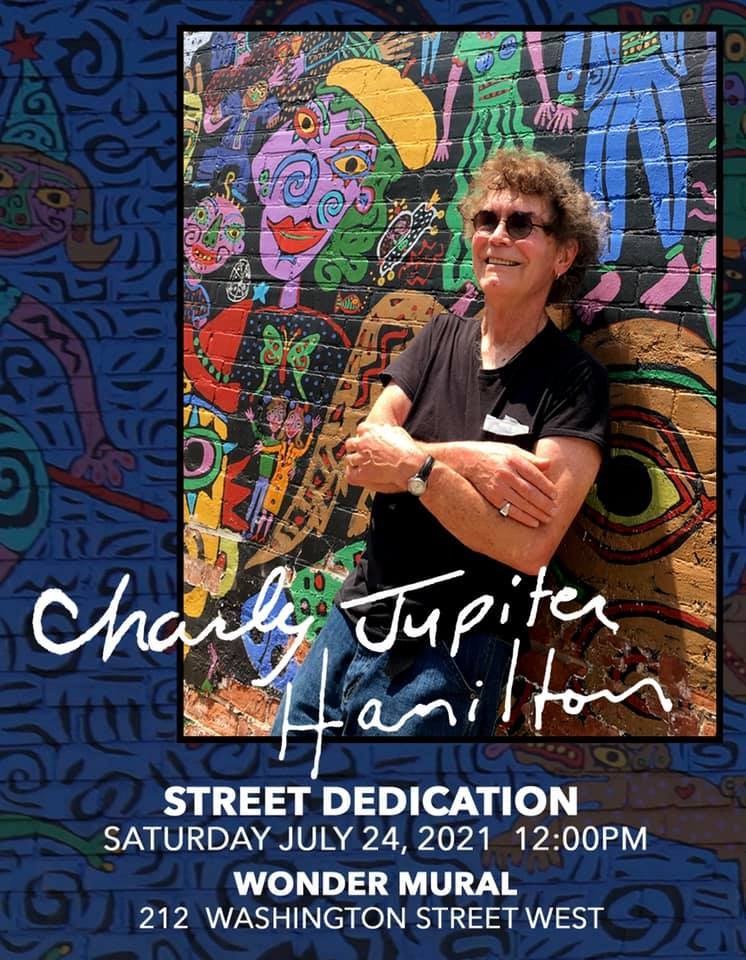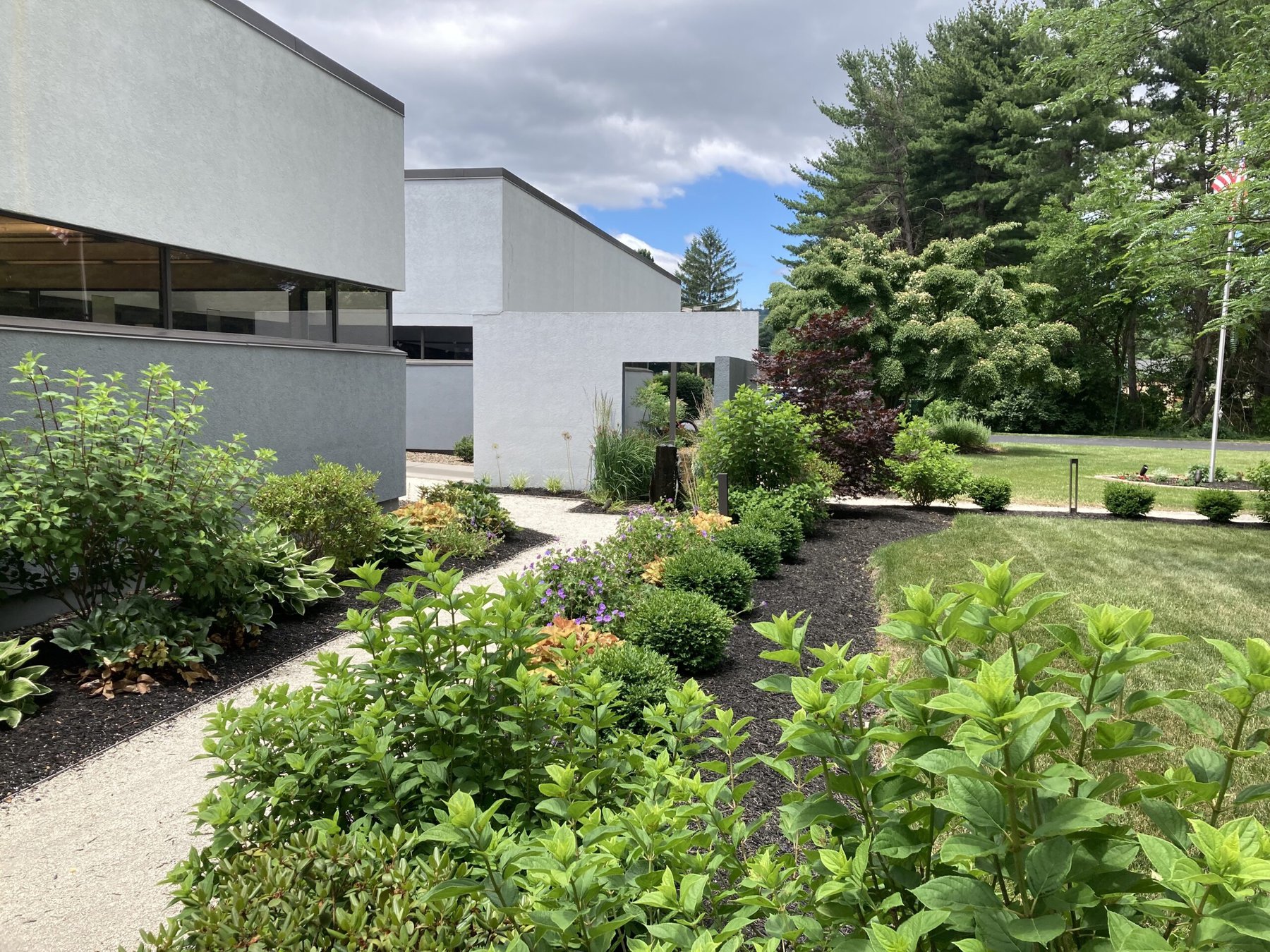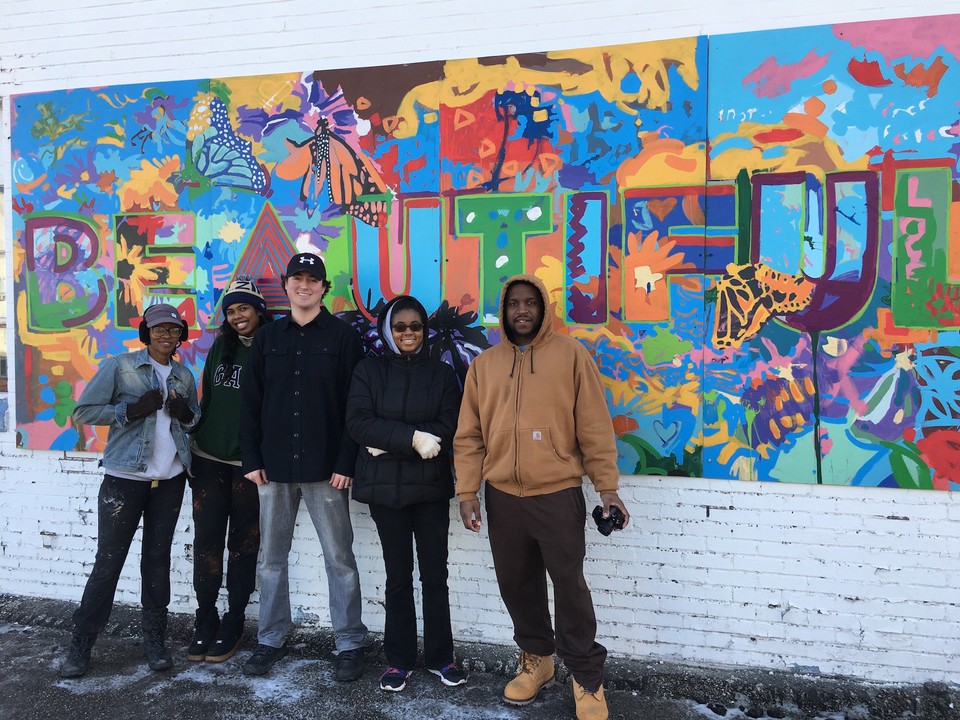Today, July 24, the city of Charleston, West Virginia, has a new street: Charly Jupiter Way. Replete with the street naming and an award presentation, the community is coming together in celebration of one of its own. Who is Charles Jupiter Hamilton?
Living in Charleston, West Virginia, but “born on planet Jupiter, Milky Way Galaxy” as the bio on his website purports, Charley’s an artist who works across various media and, as we find just over an hour into the “Our Towns” HBO documentary when he first appears on screen, a “local legend.” That’s how his lower third in the film identifies him.
“Charly Hamilton is just as vibrant as his paintings,” Jeff Pierson, Charleston Director of Public Art wrote to me via email in advance of Charly Jupiter Hamilton Day. “He is a shining light in our community.”
He is also, according to Pierson, someone whom if you talk to for more than five minutes “you are no longer a stranger, you are a friend.”
As “Our Towns” viewers first meet Charleston in the film, before they meet Charly, James and Deborah Fallows review a few rules they have when traveling to places along the “Our Towns” journey. “We never ask about national politics, because that conversation goes nowhere,” Jim says in the voiceover, as he and Deb strap into their Cirrus SR22 about to take off bound for West Virginia’s state capital.
“We do look for things people are struggling with or are achieving locally that the national press doesn’t usually notice,” Deb says as viewers watch the propeller plane lift off the runway and into the skies.
“The west side of Charleston looks like what you might expect when you hear about the city’s troubles,” she continues in voiceover, as the cameras of Steven Ascher and Jeanne Jordan take the viewer down a street with shuttered buildings in Charleston.
“But every town is full of things you don’t expect,” she adds as the camera on the street makes a right turn, revealing “The Wonder Mural” by Charly Jupiter Hamilton, located at 212 Washington Street West.

“Public art has the power to change space,” Pierson wrote to me. “‘The Wonder Mural’ by Charly Hamilton changed an entire community. Through inclusion, Charly made a piece for the community by literally painting the community.”
Charly speaks to how the mural came to be in the film, which I unpack a bit here in a profile on Tighe (pronounced ‘tie’) Bullock, of the Bullock family that’s been working to revitalize Charleston and in particular the Elk City neighborhood, including the work by his sister, Megan. As Charly notes in the film, the Bullocks told him: “We want you to paint something on the building that’ll change the community, change this whole place here.”
“Charly’s ‘Wonder Mural’ is a visual road map of the community and its people,” Pierson wrote. “He has the ability with just a few colors and some wild brush strokes to capture a person’s spirit. It’s like he can tap into everybody’s positive energy and visualize it.”
The power of public art to have an impact on communities is a thread that weaves through the Our Towns tapestry, which you can see more of here.
“Charly is an elusive guy and wasn’t easy to track down, but finally filming him at his ‘Wonder Mural’ was a revelation about how public art builds community,” Jeanne Jordan, co-director and co-producer of “Our Towns” wrote to me in email. “Charly is one of the great stars of ‘Our Towns’ – between his West Side ‘Wonder Mural,’ the eye-popping depiction of Charleston history and idiosyncrasies, and his ‘Julius Caesar’ star-turn at the end of the film, Charly is a filmmaker’s dream.”
Without spoiling the moment for those yet to see the film, Charly’s reading of a speech by Brutus in Shakespeare’s “Julius Caesar” plays a poignant and powerful role as the film draws to an end. Jim writes about that a bit more (still no spoilers!) here, but Jeanne shares the background of how capturing that moment on film came to be:
“We’d finished filming Charly and had moved on. Jim stayed and chatted with Charly and soon came to find us to say that Charly had just read a quote from ‘Julius Caesar’ that lyrically summed up what civic engagement is all about – maybe we’d like to go back and film it? We did just that, and from the minute we got the footage into the editing room, we knew we had the ending of our film. Even though we filmed in many locations for another two years, that never changed.”

What has changed – and is changing – is Charleston – a change made by the presence and celebration of public art. Nationally, the challenges of West Virginia that grab headlines are well-known – the wrestling with the collapse of the coal industry, being an epicenter for the raging opioid crisis, suffering decades of population decline.
Charleston isn’t immune to those trials. But despite the dim national accounts of West Virginia, locally, in Charleston’s story is a brighter one these days in part because of Charly Jupiter Hamilton and the community’s embrace and celebration of public art and its power to transform a place and how we think about it.
So, on the inaugural celebration: Happy Charly Jupiter Hamilton Day!
For information on how to watch the street dedication and celebration, head to Charleston’s Facebook page.




